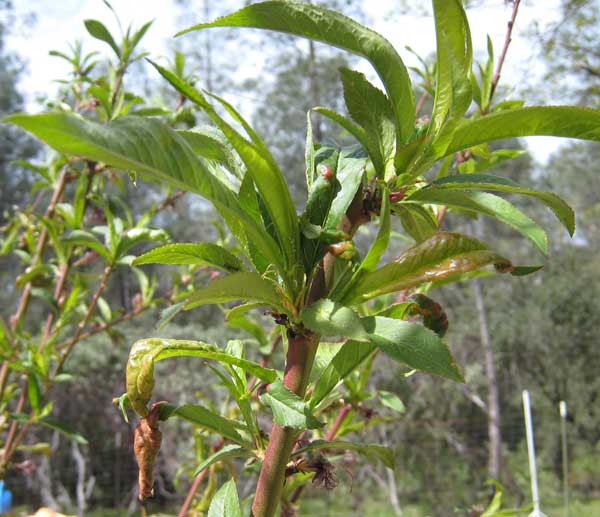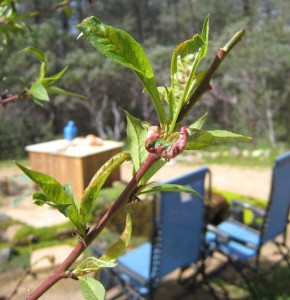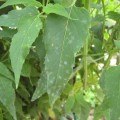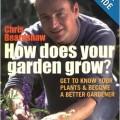Peach Leaf Curl
Taphrina deformans
Description
- fungus that lives within the plant but between plant cells on the bark
- usually worst during cool, wet springs
Plants Affected
- Peaches
- Nectarines
Lifecycle and Mechanism of Infection
- spores are carried by wind and rain then get lodged in cracks and crevices in the bark and bud scales
- the spores, or conidia, overwinters on the bark, under and around the buds of peach and nectarine trees
- in spring, the conidia are moved by water splashes to the newly developing leaves
- the spores germinate then germinate and infect the young leaves
- the fungus grows between the leaf cells, causing them to divide and grow larger than normal; swelling and puckering the leaf
- Anthocyanins (red plant pigments) accumulate in the diseased leaves, resulting in the bright red or purple areas of the leaf
- the fungus breaks through the surface of the leaf to produce another type of spore, ascospores, that look like a powdery or felt layer on the leaf
- leaf curl stops when either young tissue is no longer developing or when temperatures are 79-87 degrees F
Symptoms
Twigs & Shoots
- New growth can be stunted
- infected shoot tips may die back
Leaves
- The infection causes the leaves to curl or pucker and turn yellow then red or purple
- Eventually white or gray spots develop on the surface of discolored, swollen and curly leaves, which are actually spores of the fungus
- premature leaf drop
- A second flush of leaves comes out later in the season, and this generation of leaves almost always remains healthy, unless wet weather continues
Fruit
- deformed
- may have a reddish, irregular, rough surface
- may drop early
Tree as a Whole
- overall vigor and yield of the tree is unlikely to be affected after only one or two years of infection. Several successive years of infection will affect yield, though.
Prevention
- Plant Resistant Cultivars
- ‘Candor’
- ‘Clayton’
- ‘Com-Pact Red Haven’
- ‘Correll’
- ‘Dixieland’
- ‘Elberta’
- ‘Red Haven’
- ‘Stark EarliGlo’
- Dormant Spraying
- Lime-sulfur or Bordeaux mix
- Spray with dormant spray three times per year:
- First in the winter when at least 90% of the leaves have fallen
- Second time in January
- and again in February before the buds open
- Garden Hygiene
- Clean up all garden debris under and around your trees; remove all infected leaves from the tree; seal infected leaves in plastic and dispose in garbage – do not compost
Treatment
- Peach leaf curl can’t be cured during the current season, but copper sprays or lime-sulfur sprays help to control it. Make sure to treat in the fall to prevent infection next year.
- Pick all infected leaves promptly, seal in plastic and dispose (do not compost). it’s important to pick them before they develop white or gray spots, which are the reproductive bodies of the fungus (spores).
- note: although most sources will advise picking diseased leaves, there is little evidence that this helps control the disease.
- keep tree well-watered and fed by spraying foliage with seaweed extract to feed the tree and encourage leaf turn over. This means leaves will drop and new ones will grow to replace the dropped ones
- thin the fruit to allow the tree to put its energy into recovering from the infection
- spray with copper-based fungicides, including Bordeaux mixture or synthetic fungicides; copper compounds must be at least 50% copper to work
Sources
| Footnote | HNID | AHSPD | PGSF | |
|---|---|---|---|---|
| Title | The Organic Gardener’s Handbook of Natural Insect and Disease Control | American Horticultural Society Pests & Diseases | Pests of the Garden and Small Farm | |
| Author(s) | Barbara W. Ellis & Fern Marshall Bradley | Pippa Greenwood | Mary Louise Flint | |
| Buy Now | ||||
| Copywrite | 1996 | 2000 | 1998 |





